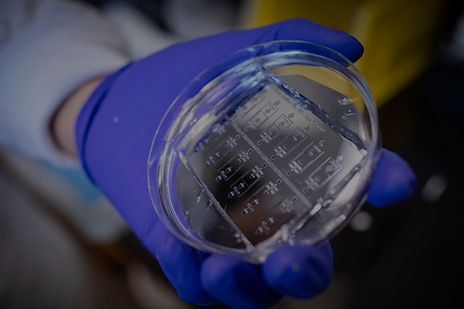
OUR RESEARCH: MICROFLUIDICS
Ultrahigh-throughput droplet microfluidics

Liquid handling is the foundation of cellular/molecular assays – from blood tests to DNA sequencing to growing cells – liquid handling is an indispensable part biological research. However, the way we traditionally perform these operations (pipettes and plastic tubes) is inherently slow and limiting.
We design microfluidics devices to perform liquid handling with tiny droplets that act analogously to plastic tubes – except scaled down 1 million fold! This fundamentally changes the types of assays that can be done. For example, using the same volume of reagents used in a tube-based PCR reaction, we can conduct millions of independent PCR reactions within tiny droplets.
Below are some examples of how we can manipulate these droplets using microfluidic devices.
We can encapsulate single cells in droplets to conduct single-cell assays at ultrahigh-throughput.
We can pair and merge droplets to combine different samples or add new reagents to already formed droplets for multi-step reactions.
We can split droplets into multiple smaller droplets. Controlled splitting of droplets can be used to further increase the throughput of droplet making or to remove reagents from droplets.
Droplets can be sorted into different channels by providing an external force as they flow through a junction. This can be used to screen through large numbers of droplets for the proverbial "needle-in-the-haystack" problems.

